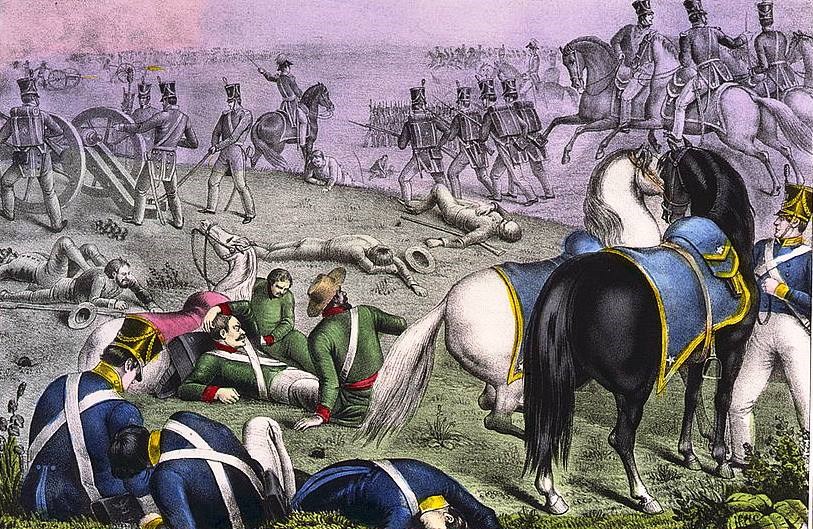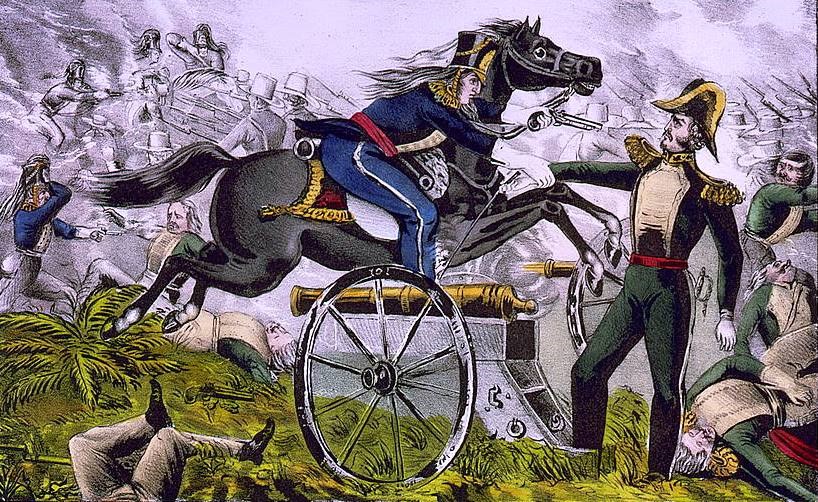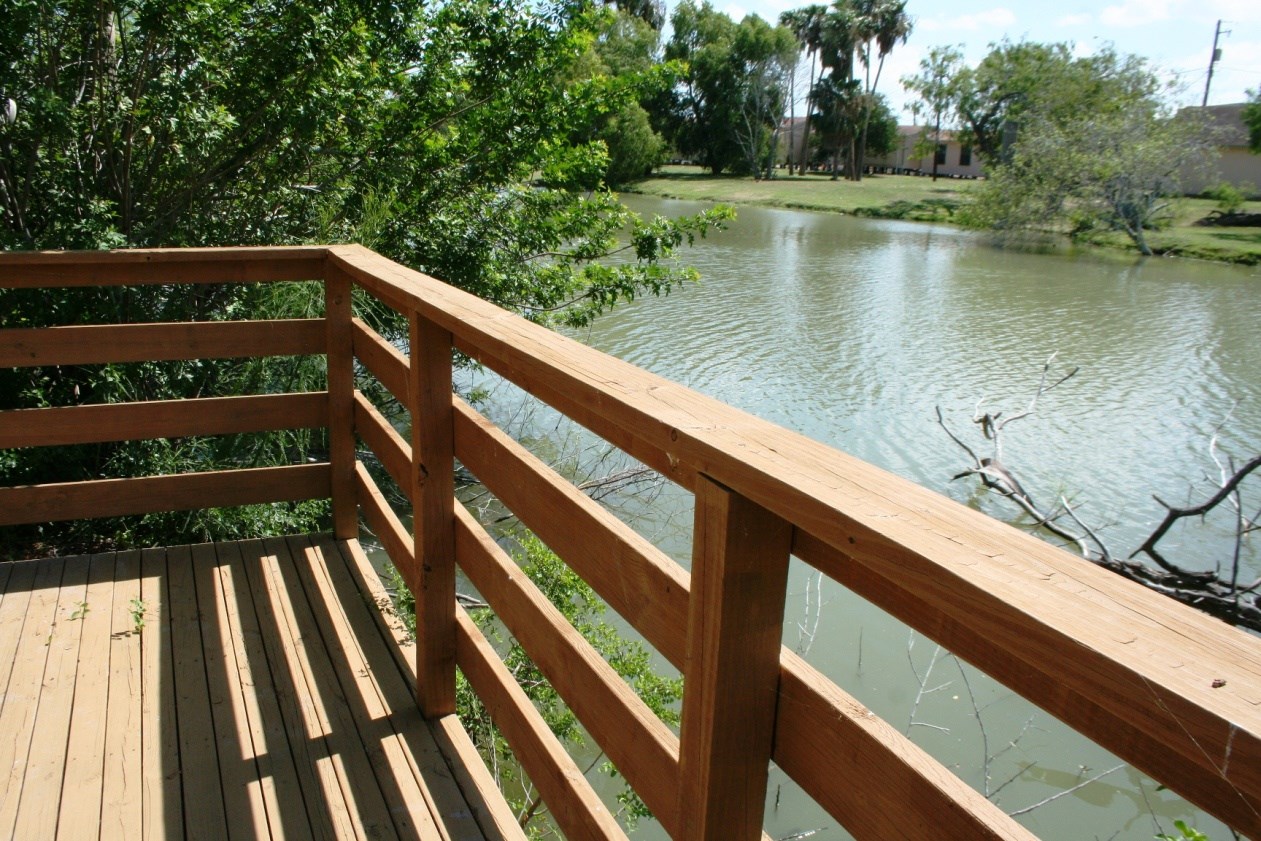
Library of Congress (no known restrictions) The Clash ContinuesResaca de la Palma, also known as Resaca de Guerrero, is an old, dry river channel of the Rio Grande. It is one of many long, water-filled ravines left behind by the shifting course of the winding river. The old pathway was lined with dense brush and its bed was dotted with pools of water. The Mexican Army hoped these natural features would limit any attack against troops positioned there. Close Quarters CombatGeneral Zachary Taylor followed Arista's force from Palo Alto to the old resaca. Taylor left his wagon train safely entrenched at Palo Alto so he could focus all of his attention on Arista's force. Taylor and his troops arrived at Resaca de la Palma around 3 p.m. and the general immediately ordered a charge on the Mexican positions. 
Library of Congress (no known restrictions) Captain May's ChargeGeneral Taylor was unaware of the success of his troops in the chaparral. He ordered Captain Charles May and his dragoons to seize the Mexican artillery blocking the resaca crossing. Captain Randolph Ridgely's artillery drew fire to expose the Mexican positions and the U.S. horsemen spurred their mounts down the roadway. Guns Fall SilentWith their cannon silenced and U.S. soldiers swarming their camp, disoriented Mexican troops fled for the safety of the Rio Grande. General Arista led a cavalry charge up the roadway, but U.S. troops advanced in such great numbers he was forced to join the retreat. Setting the ToneThe U.S. victory at Resaca de la Palma ended the six-day siege of Fort Texas and left the north bank of the lower Rio Grande firmly in U.S. hands. The battle also had an enormous effect on the morale of the two armies. 
NPS Resaca de la Palma TodayAn isolated, natural area at the time of the battle, Resaca de la Palma now lies within Brownsville's city limits. The site has been overtaken by growth in this rapidly growing border community. The old roadway that once crossed the resaca has been replaced by a major road and dense chaparral has given way to residential and commercial development. |
Last updated: May 18, 2023
